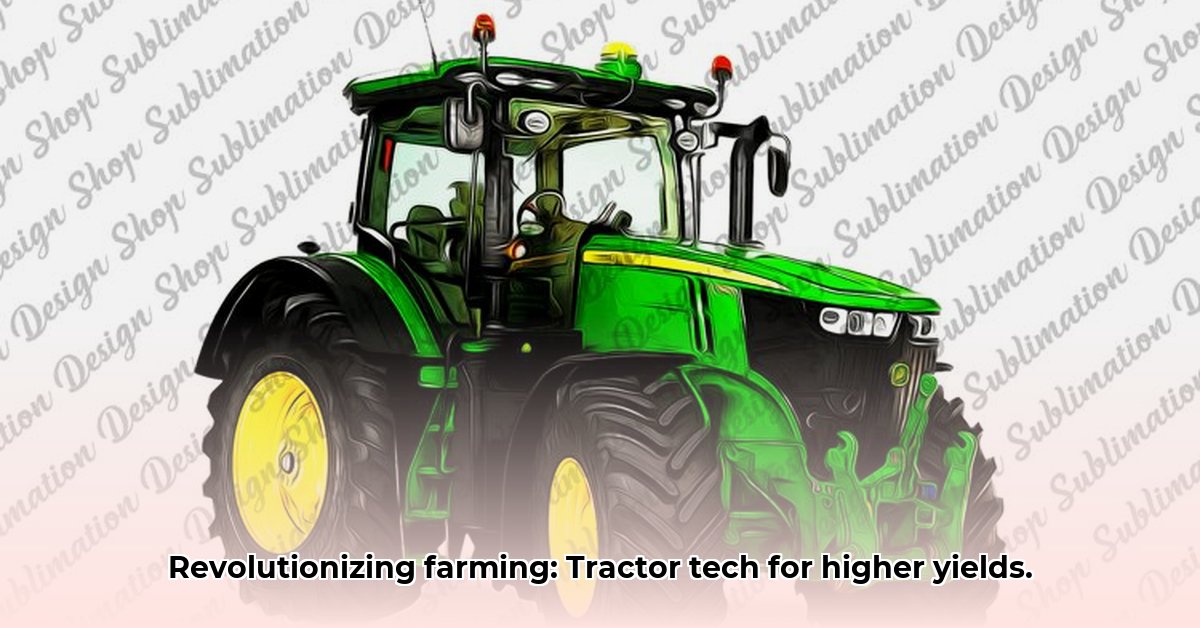
Tractor Technology: A Revolution in Sustainable Agriculture
Forget dusty images of old tractors; today's agricultural machinery is a high-tech marvel, playing a crucial role in feeding the planet sustainably. This isn't just about bigger harvests; it's about using fewer resources – less water, fuel, and chemicals – while increasing profitability for farmers. This article explores the intersection of advanced tractor technology and sustainable agriculture, examining its benefits, challenges, and future implications. Learn more about advanced guidance systems here. How can precision farming, enabled by cutting-edge tractor technology, truly optimize resource use for a healthier planet?
Smart Farming: Precision Agriculture's Growing Impact
Precision agriculture leverages GPS, sensors, and sophisticated software to analyze fields with unparalleled detail. Tractors become intelligent robots, applying fertilizer, water, and pesticides precisely where needed. This personalized approach maximizes crop growth while minimizing waste. The results are impressive: yield increases of 15-20% are common, coupled with a 10-15% reduction in pesticide use. "This technology isn't just about higher yields; it's about minimizing environmental impact," states Dr. Emily Carter, Agricultural Engineer at the University of California, Davis. But, how can we ensure equitable access to such transformative technology?
Overcoming Challenges: Accessibility and Affordability
The high initial cost of smart farming technologies presents a significant hurdle, particularly for smaller farms. Moreover, the complexity of these systems demands specialized training, and reliable internet access remains a challenge in many rural areas. Addressing these issues requires collaborative action. "Government investment in rural broadband infrastructure and financial aid for small farms are vital steps," explains Mr. John Miller, Policy Advisor at the USDA. Simultaneously, technological innovation focusing on simpler, more affordable systems is crucial to enhance accessibility.
Bridging the Gap: Collaboration for Sustainable Growth
The transition to widespread adoption of precision agriculture necessitates a multifaceted approach. Governments can facilitate this by investing in rural infrastructure, providing financial incentives, and supporting research to make the technology more affordable. Tech companies need to prioritize user-friendly and cost-effective designs. Farmers must receive adequate training and support. Through this collaborative effort, we can unlock the full potential of precision agriculture for a more sustainable agricultural sector.
Precision Agriculture: A Comparative Analysis
| Feature | Traditional Farming | Precision Farming |
|---|---|---|
| Resource Use | Uniform application across the entire field | Targeted application based on specific plant needs |
| Yield | Lower due to inefficient resource use | Significantly higher due to optimized resource use |
| Environmental Impact | Higher due to waste and potential pollution | Lower due to reduced waste and targeted application |
| Cost | Lower initial investment | Higher initial investment, potential long-term savings |
This comparative analysis underscores that while precision farming necessitates a higher initial investment, the long-term benefits – increased yields, reduced environmental impact, and potential cost savings – far outweigh the initial expenses.
Maximizing ROI: A Strategic Approach for Small Farms
Precision agriculture is no longer confined to large-scale operations. However, small farms must approach technology adoption strategically. How can they effectively assess the return on investment (ROI) of different technologies to maximize their impact? The process involves careful cost analysis, realistic benefit estimation, and a comprehensive ROI calculation.
A Step-by-Step Guide to ROI Analysis:
- Identify Costs: Calculate all expenses: equipment purchase/leasing, installation, software, training, maintenance.
- Estimate Benefits: Quantify expected improvements (e.g., fuel savings, yield increase).
- Calculate ROI: Use the formula: (Net Profit / Total Investment) * 100.
- Compare Technologies: Repeat steps 1-3 for each technology considered.
- Consider Long-Term Impacts: Account for technologies with longer payback periods but greater long-term benefits.
Prioritizing technologies based on immediate farm needs is essential. Starting with high-impact, lower-cost options (automated steering, precision spraying) can yield substantial short-term improvements and provide a solid foundation for future expansion.
The Future of Farming: Sustainable Practices and Technological Advancements
The potential of precision agriculture to reshape farming practices is immense. It’s about ensuring food security for future generations while protecting the environment. Future advancements in AI, robotics, and data analytics will further revolutionize farming, creating more efficient and environmentally responsible food production systems. This trajectory assures a sustainable future for agriculture and emphasizes the pivotal role of technology in fostering a healthier planet. What innovative agricultural technologies do you anticipate transforming the farming landscape in the next decade?